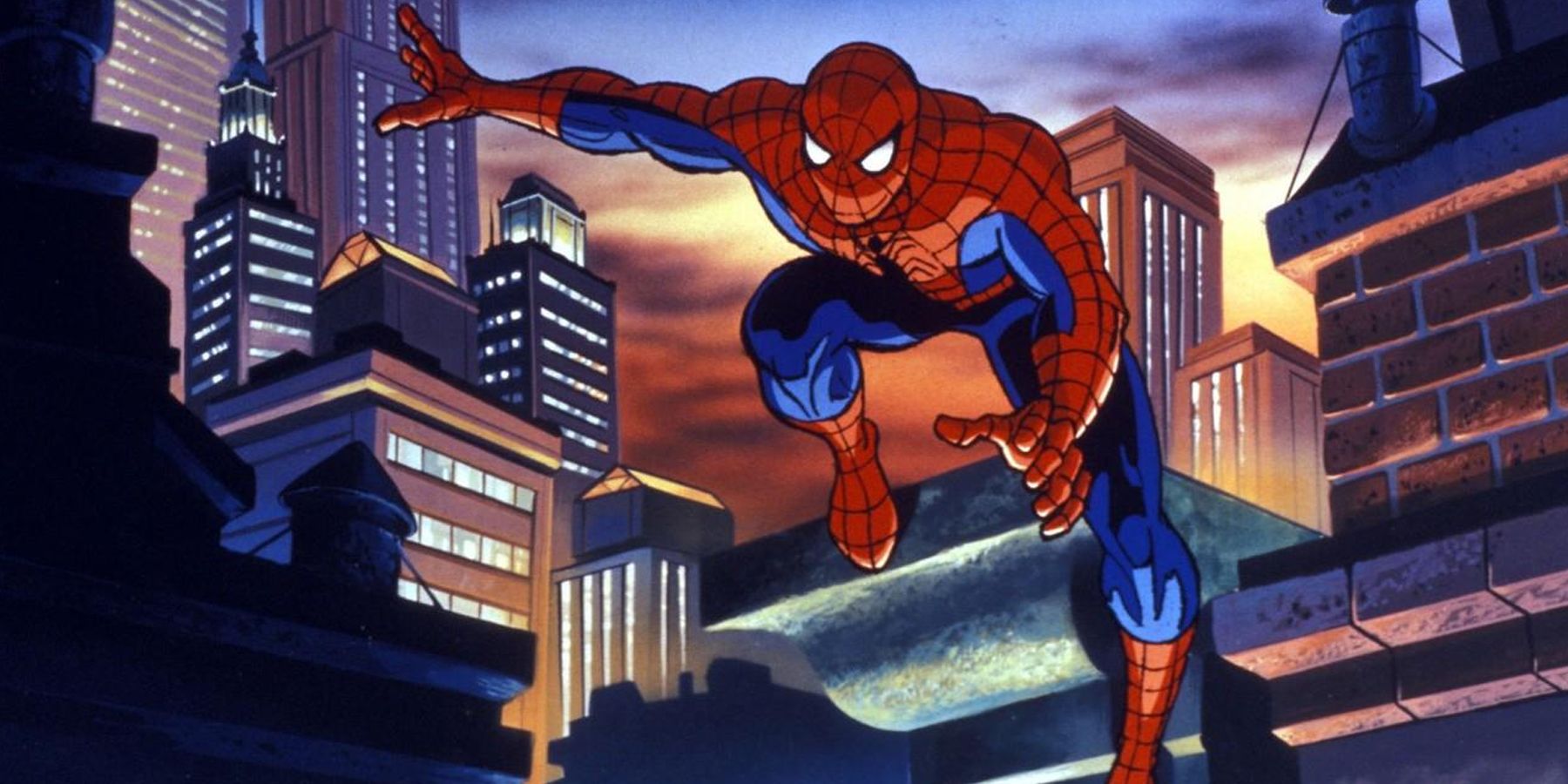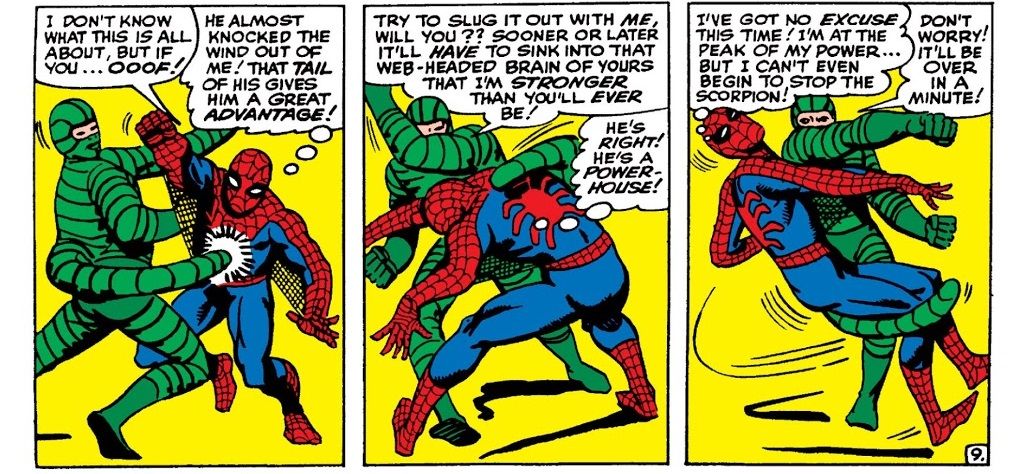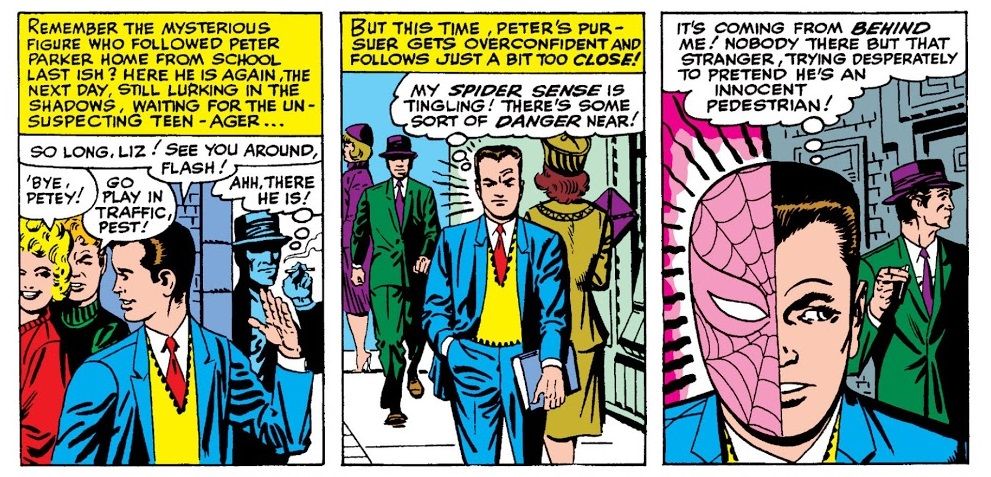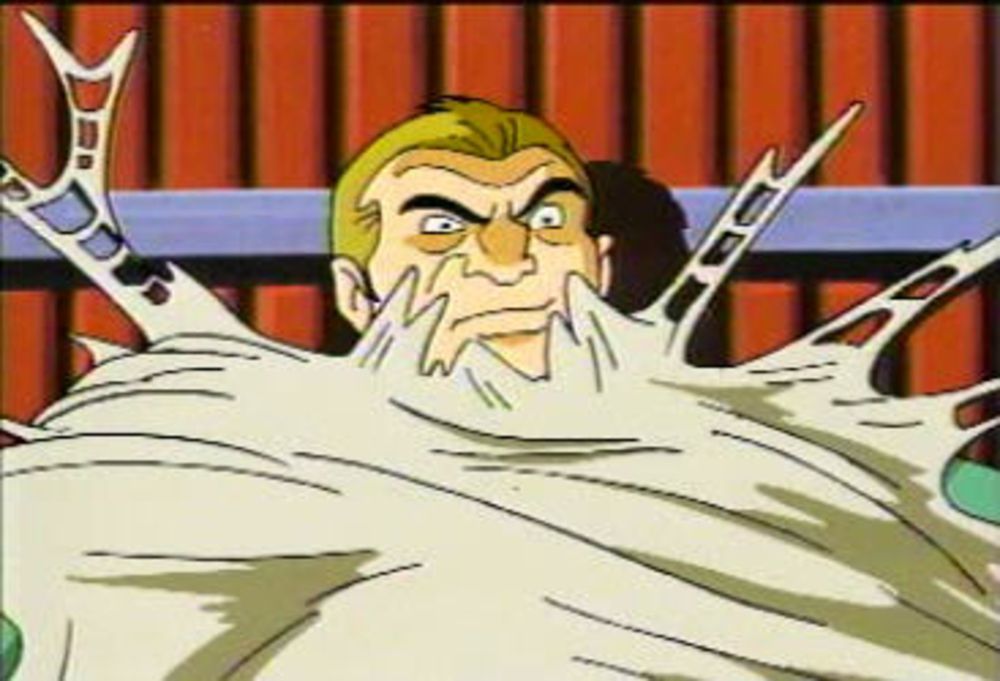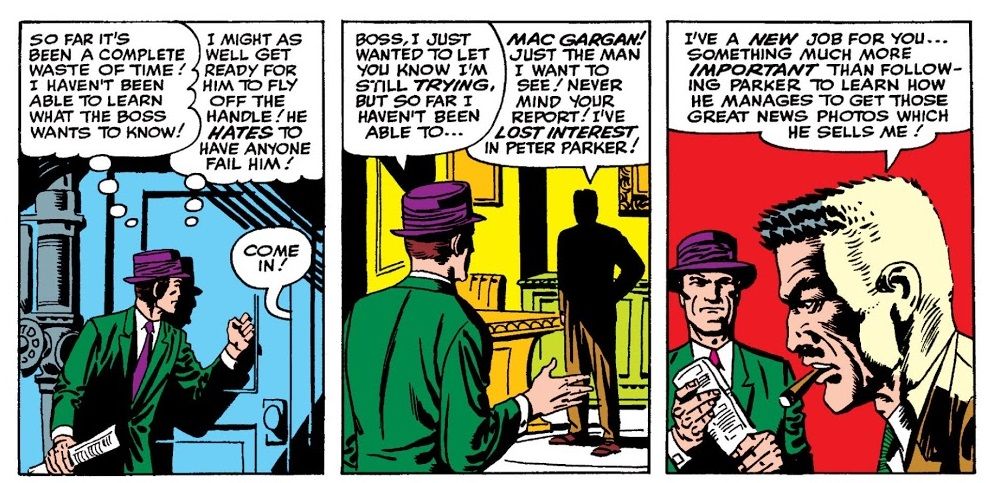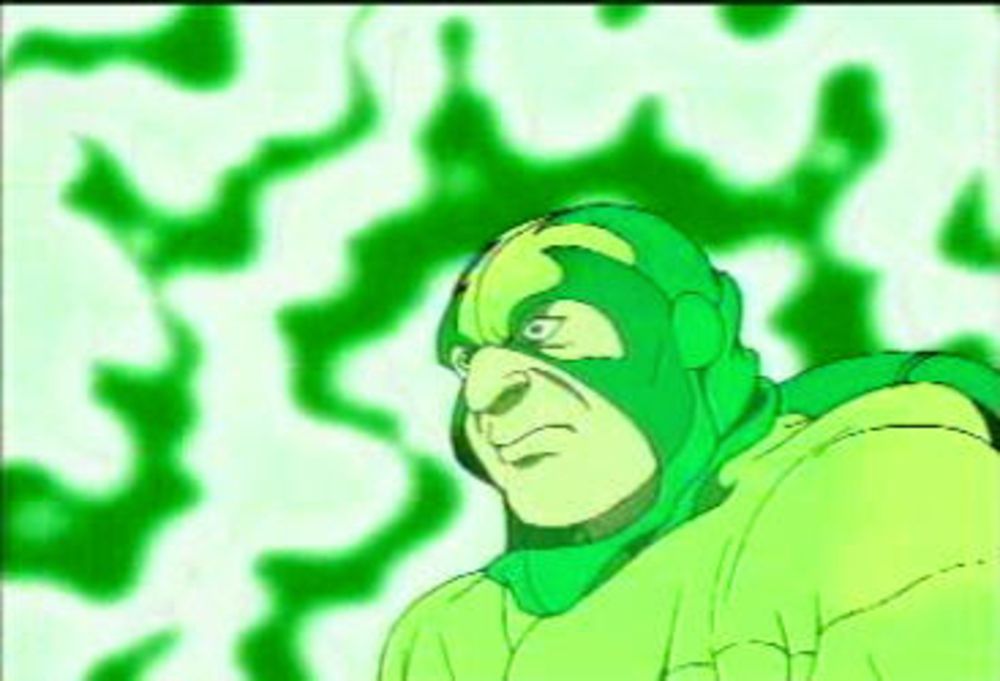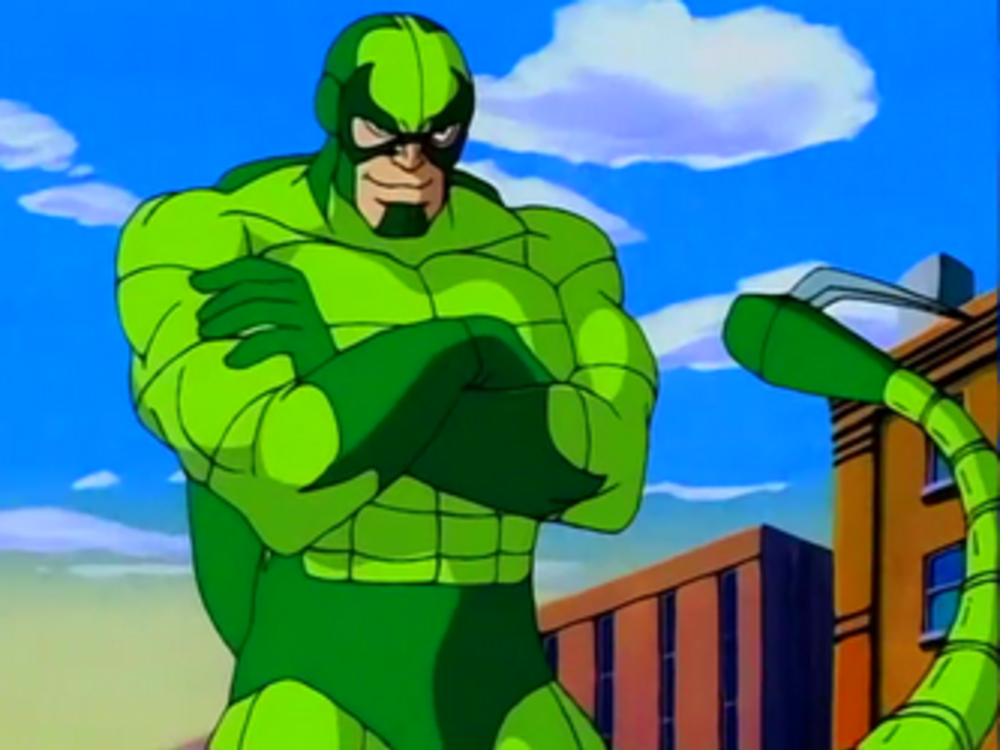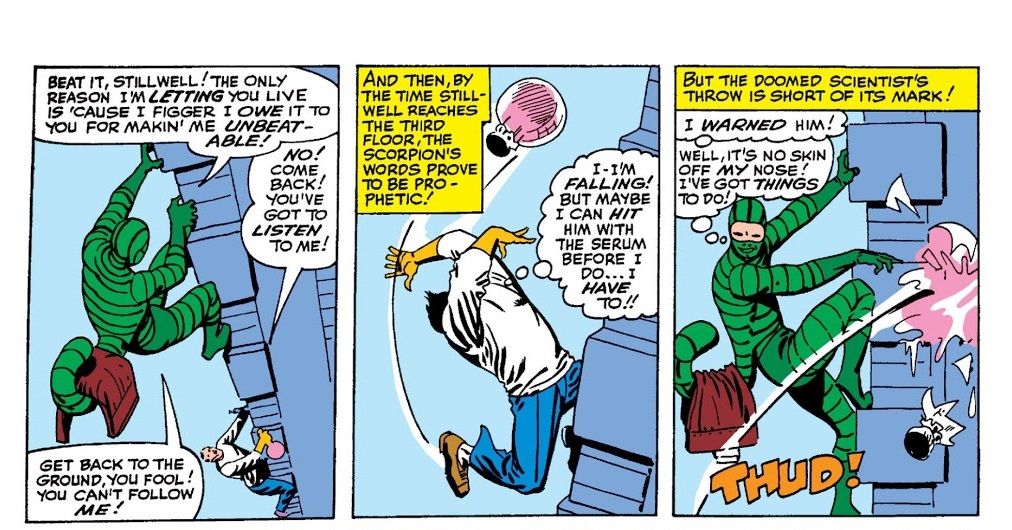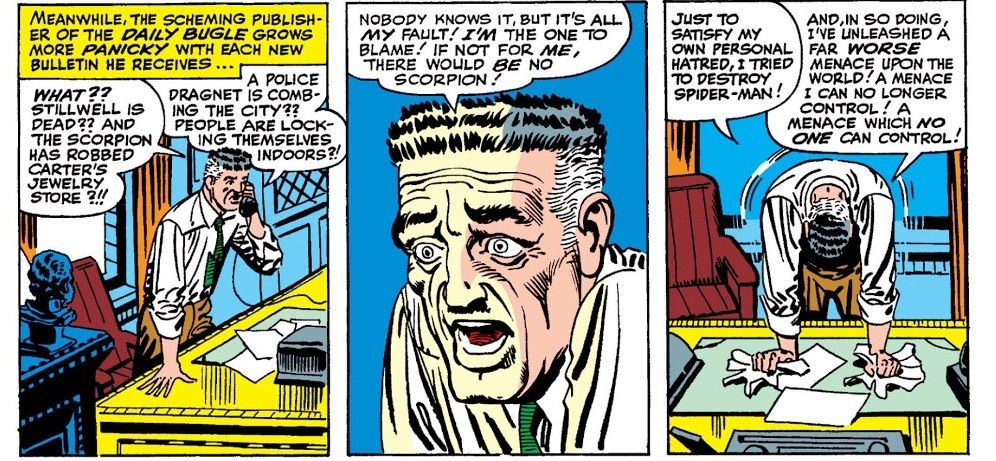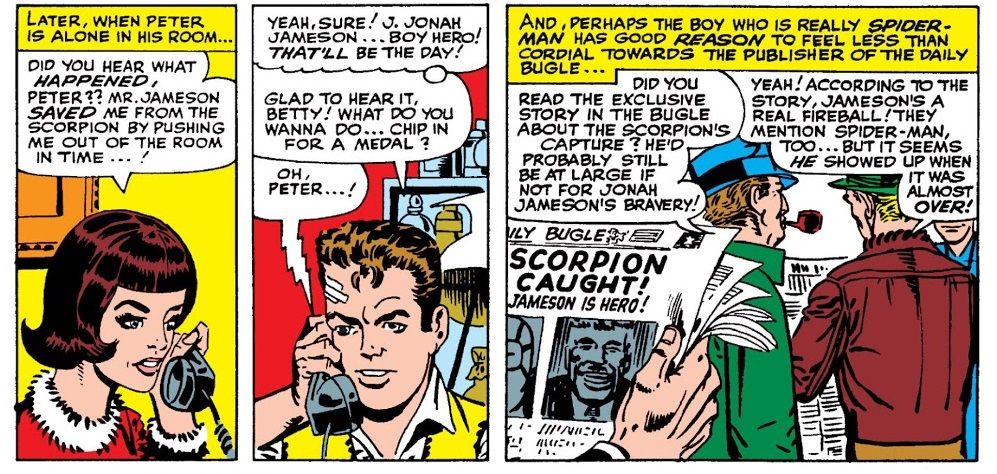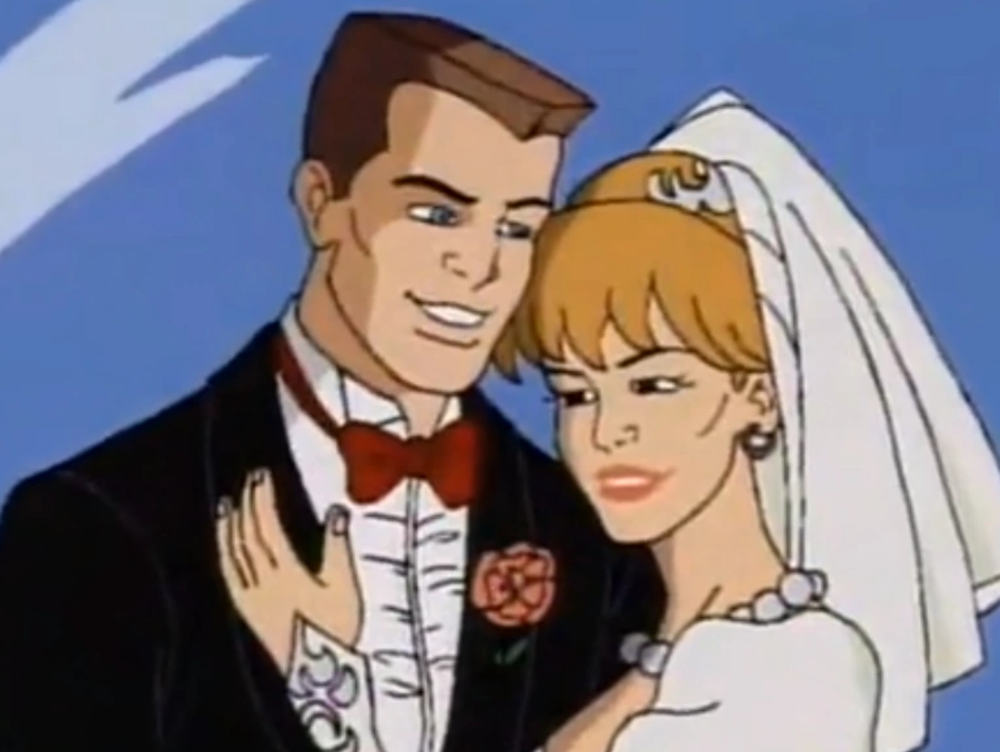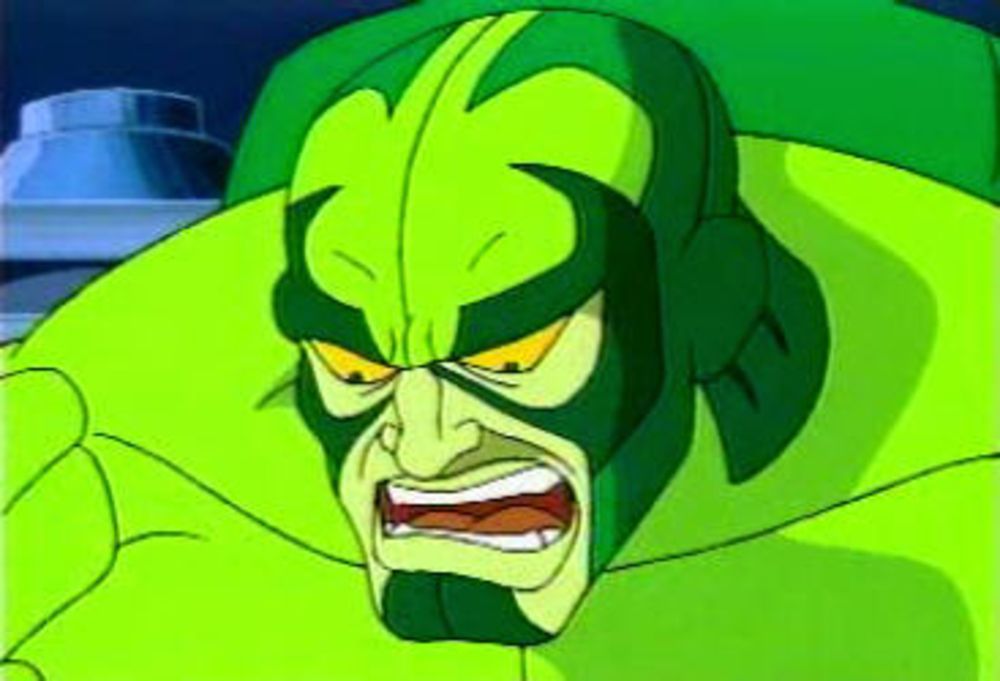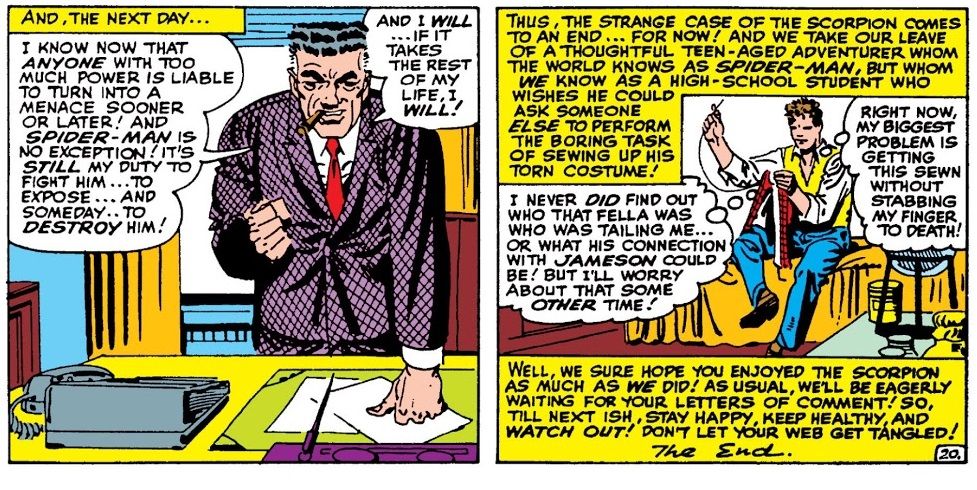Welcome to Adventure(s) Time's ninetieth installment, a look at animated heroes of the past. This week, the '90s animated debut of a Spider-Man villain that everyone knows, but few seem to, well, care about. (Even though he is voiced by an Oscar winner here.) Then, the Stan Lee and Steve Ditko story that inspired the episode. If you have any suggestions for the future, I'd love to hear them. Just contact me on Twitter.
Interestingly, this episode is not the first show to be titled "Sting of the Scorpion." The original 1960s Spidey cartoon used it first, in the episode debuting the villain. So, given the tendency of early Spider-Man: The Animated Series to borrow from the original comics, surely that's the title of Scorpion's comics debut, right?
Nope. Stan chose to call that one "The Coming of the Scorpion!" (Subtitled "Or: Spidey Battles Scorpey!" likely causing the more serious-minded Ditko to grit his teeth yet again.) A case of the crew showing themselves as hardcore fans, throwing out an homage to Spider-Man's original animated adventures? Or maybe just a coincidence. It's a dramatic, but fairly obvious, title. (Did the '90s show ever homage the classic '60s Spider-Man theme song? I honestly don't remember any nods to it.)
Regardless, "The Coming of the Scorpion!" and "Sting of the Scorpion" follow many of the same beats. Both open with Peter Parker being followed by a mystery figure.
A mystery figure we learn is Mac Gargan, a private eye. He's been hired by J. Jonah Jameson to learn how Peter nabs those Spider-Man photos. There's an immediate divergence from the comics to the cartoon here. Ditko portrays Gargan as generically 1960s handsome, while the cartoon has Gargan as a lumpy joke.
In both stories, Jameson gives up on the scheme when he discovers scientist Dr. Stillwell has conceived of a way to mutate humans into animal hybrids. Mac Gargan agrees to become the test subject (accepting a whopping $10,000 in 1964 dollars in the comic). Thus, the Scorpion is born. And fans everywhere are...perfectly okay with him.
Likely not a favorite villain, but few actively dislike him. He's fine for the role of villain of the month. And his gimmick can easily be transferred to other characters, leading to the creation of at least two female Scorpions. And Gargan has such a nonspecific personality that few get upset when, say, he becomes Venom for a while. (It's not as if there's anything unique to his identity that indicates he must be Scorpion.) Again, he's perfectly okay.
Now, the basics of this story have a danger of coming across as pretty paint-by-numbers. Jameson arranges for an everyday Joe to become a supervillain, all to take down Spider-Man. They'll fight, Spider-Man will win, then the next story is teased. So, what's done to add some personality to the setup?
In the cartoon, Jameson specifically wants Spidey unmasked (Not simply "smashed," as in the original story.) The episode, by producer John Semper, Jr. and writing team Marty Isenberg and Robert N. Skir, uses this as a way to flesh out Jameson's character. He doesn't simply hate Spider-Man for the sake of the plot, he has a real issue with men in masks.
A flashback reveals Jameson's past as a cocky reporter. He refuses to back down on a story that exposes mob activity. Soon, his wife is murdered by a masked hitman. He's determined today to protect New York from anyone hiding behind a mask, who's acting above the law. And, as Daily Bugle editor-in-chief Robbie Robertson points out, that's just what he's done by creating Scorpion.
So, Jameson is now given a redemption arc, as he contacts Dr. Stillwell, hoping for a way to erase Scorpion's powers. Before anything can be done, Scorpion bursts in, and kidnaps Jameson. And then there's a climax at OsCorp, involving a nuclear reactor and the city of course in terrible danger.
The comic, meanwhile, has Dr. Stillwell only reluctantly agreeing to work with Jameson. (Only going along with this because he needs the money for his research.) Later, Stillwell's racked with guilt for creating Scorpion. The villain, meanwhile doesn't hate Jameson yet. This will be his defining trait in coming years. Here, he simply wants to use his newfound powers to go a crime spree.
Dr. Stillwell pursues Scorpion, even up a building, with a cure. He loses his grip and falls to his death. Jameson is horrified by what's happened.
Not that he's broken up about this for long. By the end of the story, Jameson's more than willing to take credit for Spider-Man's defeat of Scorpion.
And while Jameson is now more determined than ever to stop Spider-Man, Peter is stuck sewing up his damaged costume. A typical ending for the Lee/Ditko days. The cartoon, however, isn't so bleak. The episode opens with Peter walking rich girl Felicia Hardy (a.k.a. budget Gwen Stacy) home. He's practically begging her for a date, but she refuses. When he abruptly leaves to chase his stalker, Felicia's intrigued. So intrigued, she meets up with him at the end. And she's willing to, at the very least, have lunch with Peter. More of a Lee/Romita ending than a Lee/Ditko one.
THE WRAP -UP
CONTINUITY NOTES
It's very possible the story of Jameson's early reporter days is inspired by the flashback tale in Web of Spider-Man #52. Although it's a copyboy named Danny who dies tragically in that story, not Jameson's wife. Also, Jameson's first wife should be named Joan, not Julia as seen here.
One invention of the show I think is a good idea is the Neogenic Recombinator. It's the device that's responsible for not only Scorpion's powers, but most of the animal-themed powers in the show. (Including Spider-Man's.) People have joked for years that Spidey's rogues gallery is like something out of a zoo. Well, the Neogenic Recombinator is a quick, easy way to justify why so many villains have insect and animal-themed abilities.
HEY, I KNOW THAT VOICE
Martin Landau voices Mac Gargan and Scorpion. For the first two seasons, as least. Landau dropped out of the show after winning his Oscar for Ed Wood. Richard Moll (also Two-Face on Batman: The Animated Series) picked up the role. Casting "name" actors is one way the show seemed to be following Batman's lead.
APPROVED BY BROADCAST STANDARDS & PRACTICES
Allowing Jameson's wife to be killed is pretty surprising. Not that the episode is explicit at all in depicting this.
THE BAT AND THE SCORPION
Spider-Man: The Animated Series has an odd history of critical opinion. The first season debuted with high ratings and respectable reviews. It was often spoken as a worthy companion to Batman: The Animated Series, even though it was obvious the series lacked Batman's budget. Viewers familiar with the source material cited the show's fidelity to what's viewed as "Classic Spider-Man." This episode, along with several Season One stories, is even a direct adaptation of the original Lee/Ditko comics.
And while the ratings remained high, fans and critics cooled on later episodes. The direct adaptations disappeared, as the show focused on multi-part sci-fi epics. Stories that didn't quite feel as if they suited the main characters, and weren't aided by the increasingly cheap animation. As the years have gone on, fandom tends to forgive (or at least forget) the later episodes. The early Spider-Man, the show clearly conceived with great affection for the Lee/Ditko work, is what people remember.
Honestly, this episode isn't up to Batman quality. Warners spent far more on its animated properties than Marvel -- even the best Spider-Man episodes just don't look as good. And the choppy editing and clumsy use of the limited score (always, always running in the background) are hard to ignore. But the spirit of Spider-Man is here, making it an admirable adaptation of the original story.
So that’s all for now. I've begun a new review series on Chris Claremont's 2000 return to the X-Men on my blog! You can also check out my Kindle Worlds novels for free over at Smashwords.

